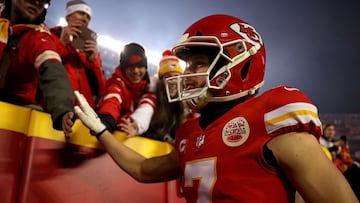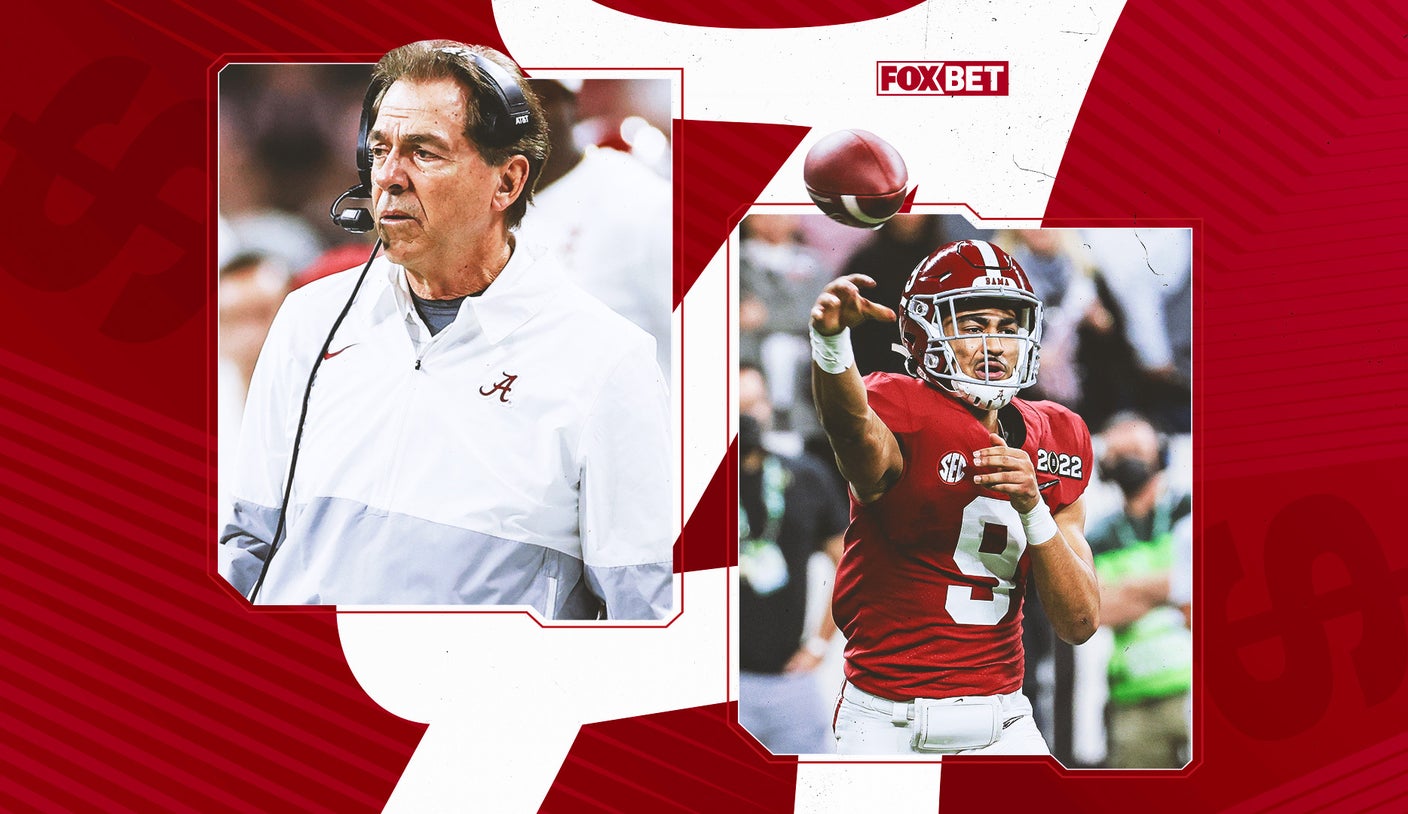NFL franchise the Kansas City Chiefs received their name in May 1963 – one which they owe, amid some controversy, to former mayor Harold Roe Bartle.

William AllenWAS_AllenUpdate: Jan 25th, 2022 09:33 EST

JAMIE SQUIREAFP
The Kansas City Chiefs were the last professional team in the United States to adopt a name or logo referencing Native Americans. While there are movements against the appropriation and misrepresentation of Native American culture by US sports teams, the Chiefs have no immediate plans to change their name – one which they were given in May 1963 and owe to Harold Roe Bartle, a non-Native businessman and a former mayor of the city.
You might also enjoy
Content:
TogglePower Rankings: Chiefs take top spot after miracle win in KCNo Entry: The Rams restrict 49ers fans ahead of NFC clashA look back at KC’s last three trips to the AFC title game
Kansas City mayor’s faux-Native American ‘tribe’ leads to Chiefs nickname
It was Bartle’s 1925 founding of a Boy Scouts of America ‘tribe’ inspired by the customs and practices of Native Americans that was the catalyst for the team to become known as the Chiefs.
In a 2019 Indian Country Today article on the origin of Kansas City’s nickname, the Mohawk journalist Vincent Schilling, who is a vocal critic of the treatment of Native Americans in sports team names and traditions, explains that Bartle claimed he had been inducted into a tribe of the Arapaho people, whose chief had given him the nickname ‘Lone Bear’.
He then created the ‘Mic-O-Say’ scout troop, whose “ceremonies, customs and traditions blend the spirit and pride of the American Indian with the ideals and objectives of the Boy Scouts of America”, according to its website. As its leader, Bartle adopted the name ‘Chief Lone Bear’ in the Mic-O-Say group, and, Schilling notes, “conducted ceremonies on new members by placing an eagle claw around their necks and giving them a ‘Native name’.”
Having taken on the name ‘Chief Lone Bear’ as a ‘tribe’ leader in the Boy Scouts – an organisation which has “long been one of the worst culprits in cultural appropriation, stereotypes, misrepresentation, and the blatant disregard of Native American peoples“, IllumiNative president Crystal Echo Hawk told a 2019 interview with Indian Country Today – Bartle subsequently became known as ‘chief’ in “many circles”, Schilling says.
In 1962, having become mayor of Kansas City six years earlier, Bartle then convinced Lamar Hunt, the owner of the AFL franchise the Dallas Texans, to move the organisation to his city – and when it came to choosing a nickname for Kansas City’s new football team, he lobbied Hunt to go with ‘Chiefs’ in his honour. The Kansas City Star has reported that Bartle’s nickname also “popped up time and again in a name-the-team contest”, leading the team’s general manager, Jack Steadman, to tell Hunt in 1963: “There’s just no other name we can select.”
YES, THE CHIEFS ARE OFFENSIVE. Harold Roe Bartle, a white man & mayor of KC, claimed that he was inducted into a local tribe and would wear a Native headdress. He started a Boy Scout-affiliated org called Mic-O-Say that uses Native ceremonies, customs, regalia, and imagery. pic.twitter.com/fJJ49aCxxq
— IllumiNative (@_IllumiNatives) February 6, 2021
Traditions referencing Native Americans
After becoming the Kansas City Chiefs, the franchise – which became a part of the NFL when the competition merged with the AFL, hitherto a rival professional football league – developed a number of traditions that make reference to Native Americans. This includes fans wearing Native headdresses and painting their faces; the adoption of a mascot named Warpaint – a horse ridden by a cheerleader in Native American-style dress; and the pre-game beating of a large drum at the team’s stadium.
Another Native American reference that has become commonplace among Chiefs supporters is the ‘Tomahawk Chop’, also called the ‘Arrowhead Chop’ after the team’s stadium name. Accompanied by a ‘war chant’, it involves swinging the arm up and down with an open palm, in imitation of the chopping motion of the tomahawk, an axe historically used by Native Americans.
Tomahawk Chop depicts Native Americans “as savages”
In a Twitter thread on Kansas City’s nickname in 2020, Schilling said he has been told to “get over it” and “move on”, and that the Chiefs are “honoring Native American people”. In response, he posted a GIF of a wild-eyed, headdress-toting, face-painted, Tomahawk-Chopping Chiefs supporter as a prime example of the way the team is in fact encouraging a caricatured, violent depiction of the Native American. “I only ask for respect,” he said in a later tweet. Speaking to AP this year, indigenous rights advocate Alicia Norris branded the Tomahawk Chop “extremely disrespectful”, agreeing that it “conjures up images of Native Americans, indigenous people as savages”.
So the #Superbowl this year is the @49ers and the Kansas City @Chiefs.As a former Sports Editor, and as a Native American journalist, I have a few things to say about this #AppropriationBowl.First, the Chiefs are not honoring Native people. I'll explain in a #Thread. pic.twitter.com/1wtfsBymfE
— Vincent Schilling (@VinceSchilling) January 20, 2020
In a 2013 report, the National Congress of American Indians argued that such “widely consumed images of Native American stereotypes” serve to “slander, defame, and vilify Native peoples, Native cultures, and tribal nations, and continue a legacy of racist and prejudiced attitudes”.
Chiefs ban headdresses and face paint, retire Warpaint
In August 2020, the Chiefs announced they were banning fans from wearing Native American headdresses at Arrowhead Stadium, and also moved to prohibit face paint “styled in a way that references or appropriates American Indian cultures and traditions”. The franchise added that it was “engaged in a thorough review process” of the Tomahawk Chop, and now instructs its cheerleaders to perform the action using a closed fist instead of an open palm. In July 2021, the Chiefs retired Warpaint.
No plans at Chiefs to change name, but other teams have
Moves such as the banning of headdresses are “a good start”, Norris told AP, “but the fans are still operating as if it is an indigenous-type atmosphere because you are still called the Chiefs”. Gaylene Crouser of the Kansas City Indian Center agrees that the franchise needs to rebrand if it truly wishes to stand against cultural appropriation and the offensive depiction of Native Americans. Crouser told CBS in February that the team needs to “rip the band aid off” and drop its nickname, explaining: “If your team name inspires you to do something that people are gonna say, ‘Hey, that’s racist,’ then maybe your team name needs to change, because that’s just not, it’s not sustainable.”
Chiefs president Mark Donovan indicated this summer that the franchise has no plans to change its name, but other major US sports teams have taken that step.


